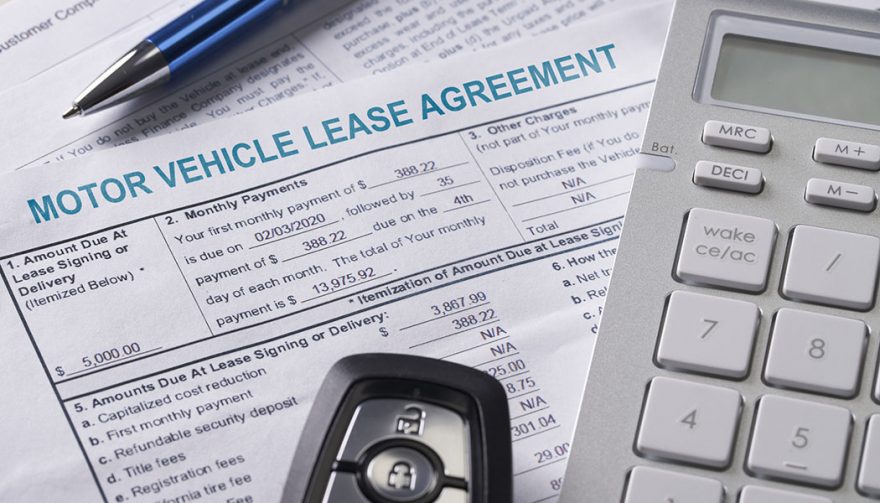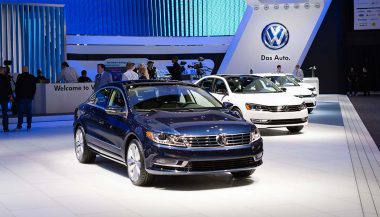
Leasing used to be a luxury car perk. Now it can get you into a new car for used car money. If you do it right. Here's how to negotiate a car lease
Getting the Best Deal: How to Negotiate a Car Lease
Leasing used to be the exclusive domain for luxury sedans. It was a way to bring the cost of driving an upscale ride from incredibly expensive down to just regular expensive. But what is good for the goose is good for the gander and now you can lease an entry-level Kia for under $100. Is a lease a good deal? There are arguments on both sides of that issue and we are not the judgmental type. What you need to know is how to negotiate a car lease.
Because leasing is different than buying a car, and not nearly as transparent, we think it would be wise to understand the language used and what fees/charges you can negotiate and which you cannot. So, with that in mind, we will take a look at the three elements of a lease where you can actually affect the price.
You Need to Speak the Language
As mentioned, leasing is different from buying and the finance person is going to use a whole new vocabulary when they walk you through the lease quote. Here are a few important keywords you need to know the meaning of to ensure you fully understand the terms and how to negotiate a car lease:
- Capitalized cost (cap cost). This is the negotiated price of the vehicle (not the MSRP) and should include any dealer incentives being offered to persons buying the ride.
- Cap cost reduction. This is anything that can reduce the cap cost. For example, if you have a trade that value will be deducted from the cap cost.
- Money factor (lease factor). This is the interest rate on the money financing the lease. This is where a dealer can make up for any concession they made in the cap cost.
- Residual value. This is a best guestimate, determined by the manufacturer, of what the ride will be worth at the end of the lease. Your lease will be determined by subtracting the residual value from the cap cost and then adding fees and taxes. Obviously, the greater the residual value, the lower the cap cost will be.
- Acquisition fee. This includes registration costs, sales tax and an administrative charge for preparing and processing the lease.
- Mileage limit. This is the number of miles per year that you can put on your vehicle without paying a fee for miles in excess of the limit. This can be a significant cost element both in fees and its effect on the residual value.
There are other fees associated with ending the lease. The disposition fee is to cover any damage to the vehicle and a purchase option fee tacked on if you decide to buy the ride at the end of the lease.

You Need to Know What You Want
Just like buying a car, you want to enter the dealership armed with as much information as possible if you want to know how to negotiate a car lease. In fact, ideally, you will know exactly which car on the lot you will want. You’ll know it is the right color, is equipped the way you want it, and you will know what that model is being sold for in your area. If you have a trade, you will use the same resources to determine its trade-in value.
You’ll know all this because you will have checked out the dealer’s online inventory, KBB, Edmunds and other online resources. You’re walking in knowing what the vehicle should cost.
You will also have made up your mind about the length of lease and the mileage allowance you can live with. The shorter the lease and the lower the mileage allowance, the greater the residual value, which reduces the cap cost and your lease payment. Got that? It can be confusing.
It’s very important you make a realistic evaluation on the number of miles you plan on using this vehicle for. If you choose the 10,000-mile limit (which will have an impact on residual cost) but you actually drive it 15,000 miles, you could be looking at fees ranging from $1,000 to $2,000, or more. Potentially much more.
You Need a Strategy
So, in essence, your lease payment will be calculated by subtracting the residual value from the net cap price and then tacking on fees and financing. You can really only negotiate three items, the capitalized cost, cap cost reduction (trade in) and the money factor or finance rate. Some dealer fees, like disposition and purchase option, you might be able to play with, but acquisition costs (set by the lender), registration and tax (the government), are fixed.
Let’s focus on what you can change and that starts with the price of the car.
You go into the dealership and tell the salesperson you are interested in a vehicle you found on their online inventory. You check it out, express your interest and ask about the best deal they can offer. Then, the process for how to negotiate a car lease dance begins. You counter their first move with your data gathered on local sales and price estimates from the internet. You get the price down and then the salesperson tries to get well on your trade value. Once again you counter with local data. At the end, you have a price (capitalization cost) that you think is fair.
Once you have a quote for the purchase, ask the salesperson what the deal would look like if it were a lease.
That will generate a quote for lease. It will most likely be designed to totally confuse you and obscure what the charges are for. There will be categories that might apply to 2 out of 100 leases filled with $0 just to add to the confusion. Tell the salesperson you need to sleep on it and take the quote home.

Analyzing the Lease Quote
The first thing you want to look at this stage of how to negotiate a car lease is the cap cost. Is it the sales price you initially negotiated or have they defaulted to the MSRP or something other than what was agreed upon? Circle the number in red.
Does the cap reduction reflect the trade-in value you negotiated, or something less? Can you even find it on the form?
There may be a line that says net capital cost, and if that is different from the negotiated cost minus the negotiated cap reduction, circle it in red.
Lastly, see if you can identify the lease factor (interest). There w will not be a percentage rate because APRs are not used in leasing. What is used for is a money factor. This is typically a decimal point followed by five digits, like .00450. That does not mean 4.5% APR. To get the APR, multiply the money factor by 2,400. In this sample, .00450 x 2,400 = 10.8% APR or way more than you should be paying.
At this point, you can either decide you do not want to deal with a dealership that tries to slip one by, or you can give them an opportunity to show you what the price will be if the terms you negotiated are implemented. The choice is yours.
Welcome to the world of car leasing. Bring determination, persistence and patience. You’ll need it when you know how to negotiate a car lease.





